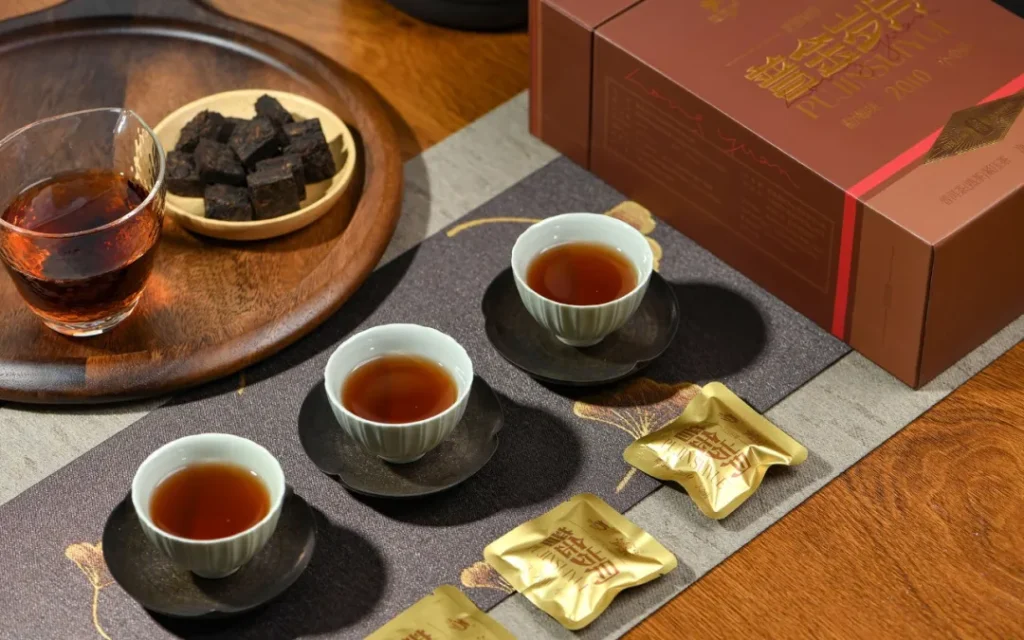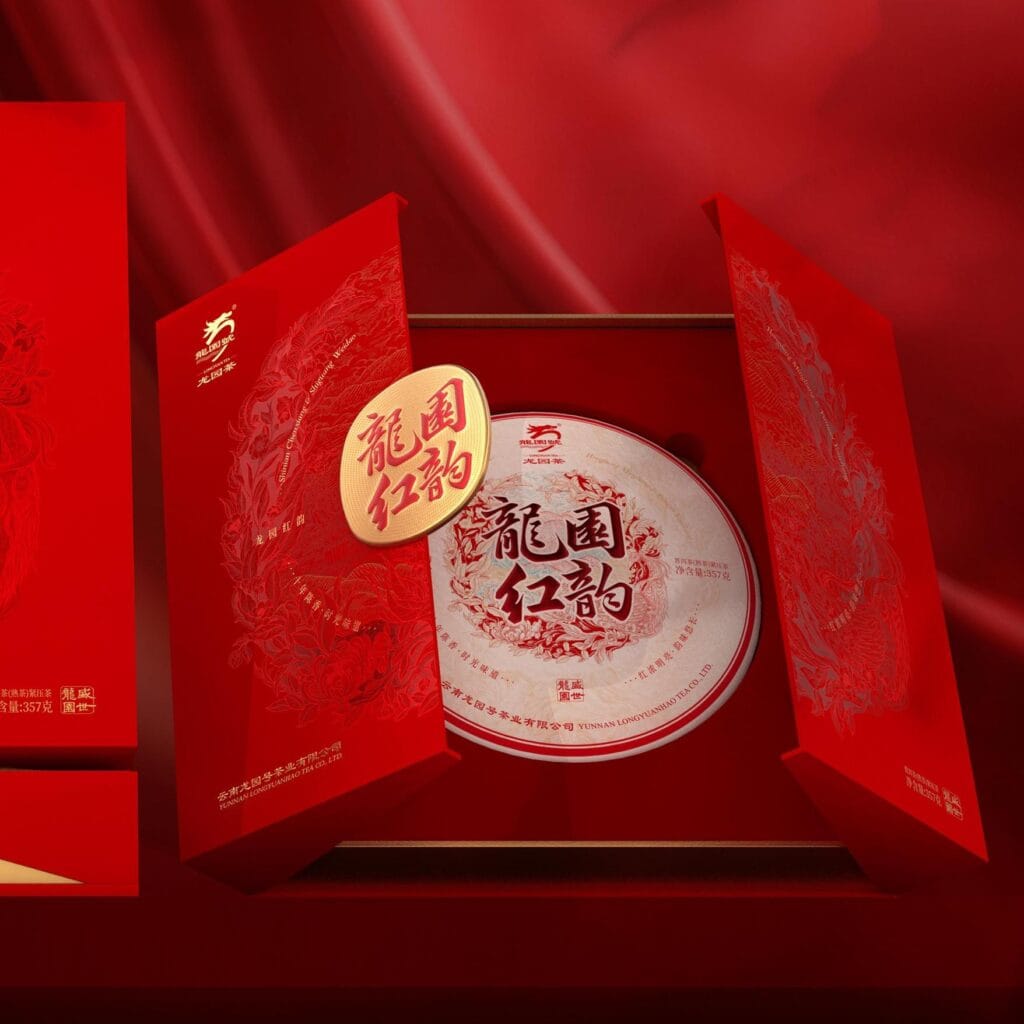Aging of the Six Tea Types(一)
In a previous post we talked about the six main tea types color changes, aroma changes. Now let’s move on to the next

Taste Changes
Oxidation and polymerization of tea polyphenols Tea polyphenols are important components affecting the taste of tea, in the storage process, tea polyphenols will continue to oxidize and polymerize.
Green tea: for green tea, the oxidation of tea polyphenols will generate some large molecules of oxidation products, these products will make the taste of green tea from fresh to become bland, and even bitter and astringent. Because the tea polyphenol itself has a fresh taste, after oxidation its structure changes, the taste also changes. For example, just brewed Longjing tea tea broth fresh and sweet, stored for some time, the tea broth will become somewhat astringent.
Yellow tea: in the storage process, yellow tea in the catechins (such as EGCG, etc.) will be oxidized and isomerization reaction, resulting in less bitter and astringent taste, yellow tea storage time is too long, the taste will become bland, lose the original sense of mellow.
Black tea: In the process of post-fermentation, tea polyphenols are transformed under the action of microorganisms. New black tea may have some astringent flavor, after storing for a period of time, the conversion of tea polyphenols generated substances will make the taste become more mellow, sweet. For example, during the storage process of Pu-erh tea, the flavor of the tea broth will become mellow and smooth from the initial astringency.
White Tea: Tea polyphenols also change during storage. The taste of new white tea is relatively light, and after years of storage, the slow oxidation and transformation of tea polyphenols will make the taste more mellow and sweet.
Black tea: The oxidation of tea polyphenols is already high during the production process, but some changes will still occur during storage. Oxidation products such as theaflavin and thearubigin will further polymerize, making the taste of black tea become more bland from mellow. Moreover, with the passage of time, the oxidized products of tea polyphenols in black tea may combine with proteins and other components to form some precipitates, which will affect the taste of black tea.
Green tea: During the storage process, the change of tea polyphenols will also affect the taste. Lightly fermented oolong tea, the oxidation of tea polyphenols will make the taste from light to mellow; heavily fermented oolong tea, the slow change of tea polyphenols will make the taste more mellow. This is because of the different degrees of oxidation and polymerization of tea polyphenols, which have different effects on the taste.

Changes in Amino Acids
Amino acids are an important source of fresh flavor in tea. During the storage process, amino acids will gradually decompose.
Green tea: Green tea has a high content of amino acids, improper storage will lead to the decomposition of amino acids, resulting in a weakening of the fresh flavor of green tea. For example, the green tea just picked and made good tea soup tastes very fresh, after a period of storage, the freshness will be significantly reduced.
Yellow tea: yellow tea’s amino acid and soluble sugar content in the storage process will change, sweetness and fresh flavor may gradually weaken.
Black Tea: During the post-fermentation process, amino acids are transformed under the action of microorganisms. The amino acid content of new black tea is relatively low. During storage, microorganisms will decompose other components in the tea to produce some amino acids, which will make the flavor more fresh and refreshing. For example, aged Pu-erh tea will have a certain freshness in the tea broth.
White Tea: The amino acids of white tea will also change during storage. The amino acid content of new white tea is high, and after years of storage, the amino acid will slowly decompose, but at the same time, the internal transformation of the tea leaves will also generate some new amino acids, which will make the flavor become more mellow and fresh.
Black tea: The amino acid of black tea will also change. During the production process of black tea, the amino acids have already undergone some transformation, but will continue to decompose during the storage process. This will make the flavor of black tea from the initial fresh mellow become more bland.
Green Tea: The amino acid changes in green tea are relatively complex. For clear oolong tea, the breakdown of amino acids will make the flavor mellow from clear; for strong oolong tea, the slow change of amino acids will make the flavor more mellow.

Soup Color Changes
The effect of oxidation of tea polyphenols on soup color
Green tea: the soup color of green tea is mainly determined by tea polyphenols and their oxidation products. In the process of storage, the oxidation of tea polyphenols generated theaflavin and theaflavin will make the green tea soup color from clear green to yellowish brown. For example, the freshly brewed Xihu Longjing tea broth is tender green, after storing for a period of time, the color of tea broth will become yellow.
Yellow Tea: The color of yellow tea soup will gradually deepen during storage, from bright yellow to yellowish brown or reddish brown. This change is mainly due to the oxidation and polymerization of tea polyphenols, and the transparency of the tea broth may be reduced when stored for too long or under improper storage conditions (such as high humidity).
Black Tea: During the post-fermentation process of black tea, tea polyphenols are transformed under the action of microorganisms, and the substances generated will change the color of the broth from the initial yellowish-brown to reddish-brown or even blackish-brown. After years of storage, the soup color of Puerh tea will become very dark, showing a reddish, thick and translucent state.
White Tea: The soup color of white tea also changes during storage. The soup color of new white tea is usually light yellow, and after years of storage, the soup color will gradually deepen and become golden yellow or orange yellow. This is because of the slow oxidation of tea polyphenols and other components in the tea, while the transformation of substances within the tea will also affect the soup color.
Black tea: The soup color of black tea is mainly composed of theaflavin, theaflavin and other components. During the storage process, theaflavin oxidizes to generate theaflavin, which will change the soup color of black tea from bright orange-red to dark brown. For example, the soup color of the newly made Jinjunmei black tea is golden yellow, and after years of storage, the soup color will become dark red.
Green Tea: The change of soup color of green tea is relatively complicated. For lightly fermented oolong tea, the oxidation of tea polyphenols will change the soup color from clear yellow-green to orange-yellow; for heavily fermented oolong tea, the slow oxidation of tea polyphenols will change the soup color from orange-red to orange-yellow or even reddish brown.
The aging of tea leaves exists a certain law, after a long time of aging, its taste and aroma will change significantly. Usually, old tea will become more mellow and smooth, astringency is reduced, sweetness is enhanced, and the aroma is more intense and complex, but not all old tea is valuable, the next article we will look at which tea is worth hiding.

